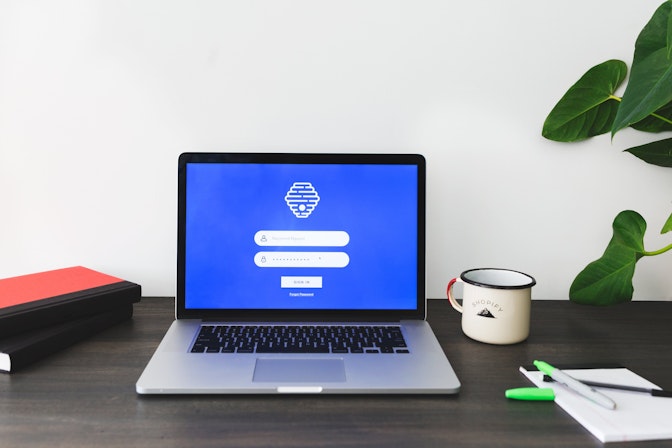With global online retail sales expected to hit $8.15 trillion by 2026, there’s no better time to start an ecommerce business.
But if you’re new to the business world, launching an online store can be daunting. Where do you begin? Should your initial focus be on product selection, website design, or marketing strategy? These questions are common for any budding entrepreneur.
This guide covers all the steps, from the basics to the more advanced aspects of running an online store. You’ll learn how to set up, manage, and grow your business into a profitable ecommerce venture.



How to start an ecommerce business: 5 steps to launch
1. Find products to sell
Being strategic with your product selection is key. Here are some tips to help you choose:
Capitalize on regional products
→ Click Here to Launch Your Online Business with Shopify
Identify products unique to certain regions or cultures that might have a demand in other areas. These can be traditional crafts, local delicacies, or specific fashion styles.
Explore niche communities
Look into niche hobbies or interests and find products that cater to these specific groups. These communities often have passionate followers looking for specialized items.
Solve a pain point
Think of a problem you’ve personally encountered and consider if there’s a product that could solve it. Products that address real-life issues can resonate well with customers.
You’ll find inspiration is abundant once you start your search. Google Trends can be a useful tool to help validate your product ideas.
Additional resources:
- How To Find a Product to Sell Online: 13 Tactics for 2024
- 10 White Label Products Ideas for Ecommerce
How to source your products
When it comes to sourcing products, dropshipping is a solid option to think about. It’s a setup where an ecommerce business sells products without dealing with inventory. A customer buys something from you, and then you order it from a dropshipping supplier who ships it directly to them.
While dropshipping is a popular choice, there are other business models like wholesaling or direct-to-consumer that might suit different business needs. However, dropshipping stands out for several reasons:
- Testing new ideas is easier: With dropshipping, trying out new products is a breeze. You don’t buy a bunch of stock upfront, so experimenting with different items to see what sticks is less risky.
- Geographic flexibility: Run your business from anywhere. As long as you have internet access, you can manage a dropshipping store, making it perfect for those who love flexibility.
- Lower entry barriers: You don’t need a big budget to start. This makes dropshipping ideal for those beginning their ecommerce journey.
Additional resources:
- The Ultimate Shopify Dropshipping Guide (2024)
- 11 Best Dropshipping Suppliers and How To Choose the Right One
2. Analyze the competition
Research is integral to the success of your ecommerce store. Once you’ve chosen your products, look at competitors and what they’re doing. Here are a few things to pay attention to when doing a competitor analysis:
- What is their business model?
- Are they selling multiple items or just one product?
- What social media channels do they utilize?
- Who is their target market?
- How do they push sales? (e.g., paid social, PPC, SEO, email, etc.)
Competitor analysis can lead you to identify better products to sell and give you a good understanding of how to launch an online business.
Additional resources:
3. Write a business plan
With your competitive research complete, it’s time to write your business plan. This plan serves as a roadmap, guiding your ecommerce journey from start to growth. It’s especially important for aligning your goals and strategies.
Tips for crafting a successful business plan:
- Define clear objectives: Start by setting specific, measurable goals for your business. This could include sales targets, customer acquisition numbers, or market penetration rates.
- Outline your business model: Describe how you will manage inventory, whether through dropshipping or holding stock.
- Detail your marketing approach: Explain how you’ll attract customers. Include tactics like SEO, social media marketing, and influencer collaborations.
- Make financial projections: Include detailed financial forecasts. Show expected revenue, expenses, and break-even point.
- Conduct a risk analysis: Identify potential challenges and how you’ll address them. This could include market changes, supply issues, or technological advancements.
- Include an action plan: Break down your strategies into actionable steps with timelines. This makes your goals more attainable and trackable.
Additional resources:
- The 7 Best Business Plan Examples (2024)
- Business Plan Template: The Ultimate Guide for Ecommerce Businesses
4. Choose a name and logo
Choosing a business name
Choosing the right name for your online business is a critical step. A good name sticks in people’s minds and becomes synonymous with your brand’s identity. Tools like Oberlo’s business name generator are great for sparking unique ideas and checking if a domain is up for grabs.
After picking a few names, see if they’re available on social media. Your brand needs the same name everywhere for people to recognize you easily. Thinking of selling worldwide? Make sure your name works across different cultures. You don’t want any surprises there.
Crafting a logo
Your logo is the visual heartbeat of your brand. Begin with something straightforward yet impactful using Shopify’s free logo maker. This tool is ideal for those new to logo design.
Consider how your logo will appear in different settings. It needs to shine on everything from your website to product packaging. A well-designed logo, aligned with your business name, lays the foundation for a strong brand presence in the online marketplace.
Additional resources:
5. Build your online store
Once you have chosen a name and logo, the next thing to do is build your store. Choosing ecommerce hosting platforms like Shopify can make setting up your store easy. Shopify has lots of templates to start with and an easy-to-use online store builder that doesn’t need coding input.
When your website is ready to start taking orders, remember to try a test order yourself to make sure the process is smooth for the customer. Alleviate any additional steps needed to buy something online and ask only for information that is necessary for the checkout process.
Additional resources:
- 7 Best Free Shopify Themes For Your Online Store
- 58 Most Inspiring and Successful Shopify Stores in 2024
6. Choose your sales and marketing channels
There are various sales channels available, and selecting the right ones depends heavily on your target audience and the types of products you sell. If you specialize in unique or handcrafted items, niche marketplaces like Etsy are more suitable than broader platforms like Amazon or eBay.
Here’s a list of marketplaces that cater to different niches:
- Bonanza: A great platform if you’re selling unique and diverse items. From fashionable clothing to rare collectibles, it attracts a wide range of buyers.
- Newegg: If your specialty is electronics and tech gadgets, Newegg is your marketplace.
- Reverb: This niche marketplace is dedicated to musical instruments and gear. It connects sellers with a targeted audience of musicians and enthusiasts.
On the marketing front, balancing cost and effectiveness is key. You want to reach the right people without breaking the bank. Here are some strategies to consider:
- Social media marketing: Engage on Instagram with live sessions, for example—a cost-effective way to connect and show your brand’s personality.
- Email marketing: Interactive emails with quizzes or polls boost engagement without significant expense, offering valuable customer insights.
- Influencer partnerships: Working with niche micro-influencers can be more affordable and effective for targeting specific customer groups.
- Search engine optimization (SEO): Focus on voice search optimization. It’s a smart, future-proof strategy that can reduce long-term marketing costs.
Additional resources
- 10 Best Marketing Channels for Ecommerce Stores
- 9 Marketing Strategies That’ll Level Up Your Ecommerce Store
7. Launch your business
Now, you’re ready to launch your online business. It’s a big step, and there’s plenty to keep an eye on as you start. First up, watch your key performance indicators (KPIs) closely. They tell you how well your store is doing and what you might need to tweak.
Next, make sure your shipping runs smoothly. Happy customers often come back, so getting orders to them without a hitch is crucial. If something goes off track, be ready with a backup plan.
Finally, keep learning and adjusting based on what your customers say and what your data shows. This way, your business keeps growing and improving.
How much does it cost to start an ecommerce business?
Starting an ecommerce business can be more budget-friendly than you think. Often, you might need only about $100 to get going, mainly for a website subscription and a theme for your store. One of the perks of an ecommerce business is that it typically costs less than a brick-and-mortar store. You won’t have the same overheads like rent for a physical space.
If you opt for a dropshipping business model, the initial costs can be even lower. In dropshipping, you pay for products only after customers buy them, so there’s no upfront expense for stock. However, if you’re making products yourself or working with manufacturers, you’ll need to invest in materials and labor from the start.
Shopify’s research sheds some light on what to expect financially. They surveyed 150 entrepreneurs and 300 small business owners across the US. The findings suggest that new ecommerce store owners might spend up to $40,000 in their first year, covering everything from products and operations to marketing and staff wages. But these costs are usually offset by your business’s profits.
Here’s a rough breakdown of typical first-year expenses:
- Online store setup: 9%
- Operating costs like legal fees and software: 11%
- Marketing: 10.3%
- Product-related costs: 31.6%
- Shipping: 8.7%
- Team and staff expenses: 18.8%
- Offline costs, like event fees: 10.5%
However, the actual amount can vary based on factors like your industry, the type of ecommerce model you choose, and whether you hire employees. And you don’t need to have the entire sum upfront. Many entrepreneurs start with personal savings, while others may seek support from friends, family, or personal loans.
4 tips for creating a profitable online store
Launching an ecommerce business is just the beginning. To make it profitable, you need to think differently. Here are some actionable tips for success:
1. Enhance customer interaction
Revamp your customer service approach. Implement interactive features like virtual product trials or augmented reality on your site. This will give customers a new way to experience your products.
2. Gamify your shopping experience
Transform your website into an interactive playground. Add elements like scavenger hunts for discounts or fun quizzes that lead to personalized offers. These tactics can make shopping more engaging and increase sales.
3. Personalize with AI
Incorporate AI technology into your store. Use it to analyze customer behaviors and preferences. Then, tailor product recommendations and content accordingly to enhance the shopping experience.
4. Keep your inventory fresh
Regularly update your product offerings. Use market trends and customer feedback to introduce new items. Consider limited-edition products or collaborations to create excitement and attract repeat visits.
Open your ecommerce store
Building an ecommerce business from scratch has its mix of highs and lows. You’ll be choosing products, gauging their market fit, and handling production. Next comes developing your online store and drawing in customers. It’s a bit like solving a complex puzzle, and the satisfaction of seeing it come together is immense.
Hopefully this article has helped you understand how to start an ecommerce business. You’ve got everything you need at your fingertips to make this the year your store takes off, and we’re happy to help you meet this goal.



Ecommerce business FAQ
What are the 4 ecommerce business models?
There are four primary ecommerce business models, :
- Consumer to business (C2B): In this model, individuals offer products or services to businesses. An example is an influencer charging a fee to provide brand exposure to their audience.
- Business to business (B2B): Here, one business sells goods or services to another business. For instance, a company might sell wholesale products to another business for their use.
- Consumer to consumer (C2C): This model involves transactions between consumers. An example is selling vintage clothes on a platform like Facebook Marketplace to another individual.
- Business to consumer (B2C): In this common model, ecommerce businesses sell goods or services directly to individual consumers, like purchasing a jacket from an online retailer.
How do I start an ecommerce business without money?
To be honest, you’d need at least a few hundred dollars to start an ecommerce business. That’s because it’s a product-based business that requires you to build an online store, do marketing, and invest in the growth of your brand.
That said, you can start an ecommerce business on the cheap by choosing dropshipping as your business model, tapping into free marketing channels, and creating brand awareness via word-of-mouth strategies. You can also look into funding programs like Shopify Capital to get the money you need to start and grow your ecommerce business.
Is an ecommerce business profitable?
In a word: yes. But realizing your profits could take a while, since an ecommerce entrepreneur’s journey is a marathon rather than a sprint. It could take you 18 to 24 months to see a profit. That’s why we recommend you don’t measure the success of your ecommerce venture by your net profit in the first year.
Want to Learn More?
- How to Start a Photography Business
- 30 Amazing Startup Business Ideas
- The Ultimate Guide to Mobile Commerce
- How to Start a Business



